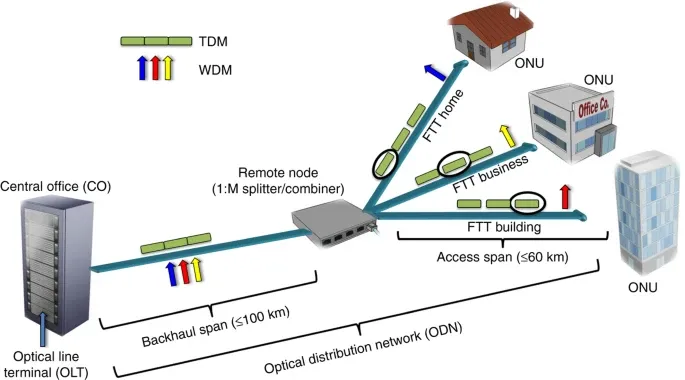Secure Your Residential Property With Reputable Fiber Optic Security Solutions
In an era where safety and security hazards are progressively advanced, the requirement for efficient security services is paramount. Fiber optic protection systems stand out by supplying extraordinary dependability and performance, leveraging advanced light transmission innovation to enhance security capacities. security fibers. Recognizing the ins and outs of fiber optic safety can brighten the path to safeguarding your residential property a lot more successfully.
Advantages of Fiber Optic Protection
Fiber optic safety and security solutions supply a series of benefits that make them significantly essential in today's electronic landscape. Among one of the most considerable benefits is their premium data transfer capability, which permits the transmission of huge quantities of data over cross countries without significant signal deterioration. This capability is specifically advantageous for safety systems that rely upon high-definition video clip monitoring and real-time monitoring.
In addition, fiber optic wires are naturally a lot more safe and secure than standard copper wiring. They are unsusceptible to electromagnetic interference, making them much less vulnerable to hacking or eavesdropping. This boosted safety and security is crucial for securing sensitive information and preserving the integrity of security systems.
Additionally, optical fiber are extra sturdy and resistant to ecological variables, such as wetness and temperature level changes, guaranteeing long-lasting dependability and decreased upkeep prices. The light-weight nature of fiber optic cable televisions additionally streamlines installation processes, allowing for greater adaptability in system style.
Exactly How Fiber Optic Equipment Job
In modern safety and security applications, the operation of fiber optic systems relies upon the concepts of light transmission through flexible glass or plastic fibers. These fibers are created to lug light signals over lengthy distances with minimal loss, making them ideal for transferring data associated with security surveillance. The core of the fiber, bordered by a cladding product, guarantees that light signals remain had within the core through a phenomenon called overall internal reflection.
When integrated into safety and security systems, fiber optic cords can send data from various sensors, such as electronic cameras, activity detectors, and alarms, to a central surveillance terminal. The high bandwidth ability of optical fiber permits the transmission of huge quantities of information all at once, allowing real-time surveillance and punctual response to potential threats.

Kinds Of Fiber Optic Safety And Security Solutions
Various types of fiber optic safety solutions have actually emerged to boost surveillance and protection throughout different settings. One popular solution is fiber optic boundary intrusion detection systems (PIDS), created to keep an eye on and secure property limits via the detection of vibrations and disturbances along fiber optic wires. These systems offer real-time signals, allowing timely reactions to you could try this out unauthorized accessibility efforts.
One more reliable solution is fiber optic video clip monitoring. This modern technology leverages high-definition video cameras attached by means of fiber optic cords to send video clip information over cross countries without considerable loss of quality. This arrangement is particularly useful in large locations, such as airports and industrial sites, where traditional copper cables might falter.
Additionally, fiber optic sensors are progressively utilized for environmental tracking, identifying adjustments in temperature, pressure, or acoustic signals that could why not look here show security violations or hazardous conditions. These sensors provide high level of sensitivity and accuracy, making them perfect for vital facilities security.

Installment and Upkeep Tips
Efficient installation and upkeep of fiber optic protection options are essential for ensuring their optimal efficiency and durability. Fiber optic cables need to be directed safely, staying clear of sharp bends or twists that might compromise their honesty.
During installment, it is a good idea to carry out comprehensive screening of the system to verify that all components are working correctly. Regular maintenance checks need to be arranged to examine the fiber optic cable televisions for any signs of wear or damages, in addition to to ensure that connections remain safe and secure. Cleaning up the connectors periodically is likewise vital to stop signal loss due more information to dirt or debris.
Moreover, maintaining an upgraded supply of installed elements and their specifications can assist in less complicated troubleshooting and upgrades. By adhering to these installation and upkeep tips, home proprietors can optimize the performance of their fiber optic safety and security options, guaranteeing a reputable protection versus potential risks.
Contrasting Prices and Effectiveness
When examining fiber optic safety and security options, understanding the balance in between prices and performance becomes extremely important (security fibers). Organizations needs to take into consideration the ahead of time financial investment, ongoing maintenance expenses, and the long-term value these systems supply. While fiber optic systems might call for a higher initial installation cost compared to traditional copper electrical wiring, their longevity and reduced susceptibility to electro-magnetic disturbance usually convert to reduced maintenance costs gradually
Efficiency is one more important aspect; fiber optic safety systems use boosted information transmission rates and enhanced reliability. They can cover larger ranges without signal destruction, making them optimal for large properties or remote places. Moreover, the high bandwidth ability sustains sophisticated safety applications, such as high-definition video security and real-time tracking, which are vital for comprehensive protection monitoring.
Eventually, the selection between price and performance must be guided by particular security requirements and risk analyses. Organizations must examine their unique demands, considering aspects like home dimension, safety and security hazards, and technical improvements. By conducting a detailed cost-benefit evaluation, stakeholders can make informed choices that straighten with their safety and security purposes while making certain a sound investment in fiber optic modern technology.
Conclusion
In final thought, fiber optic safety services offer significant advantages in terms of performance, reliability, and resistance to ecological interferences. Eventually, the fostering of fiber optic innovation represents a forward-thinking approach to guarding buildings versus developing safety and security dangers.